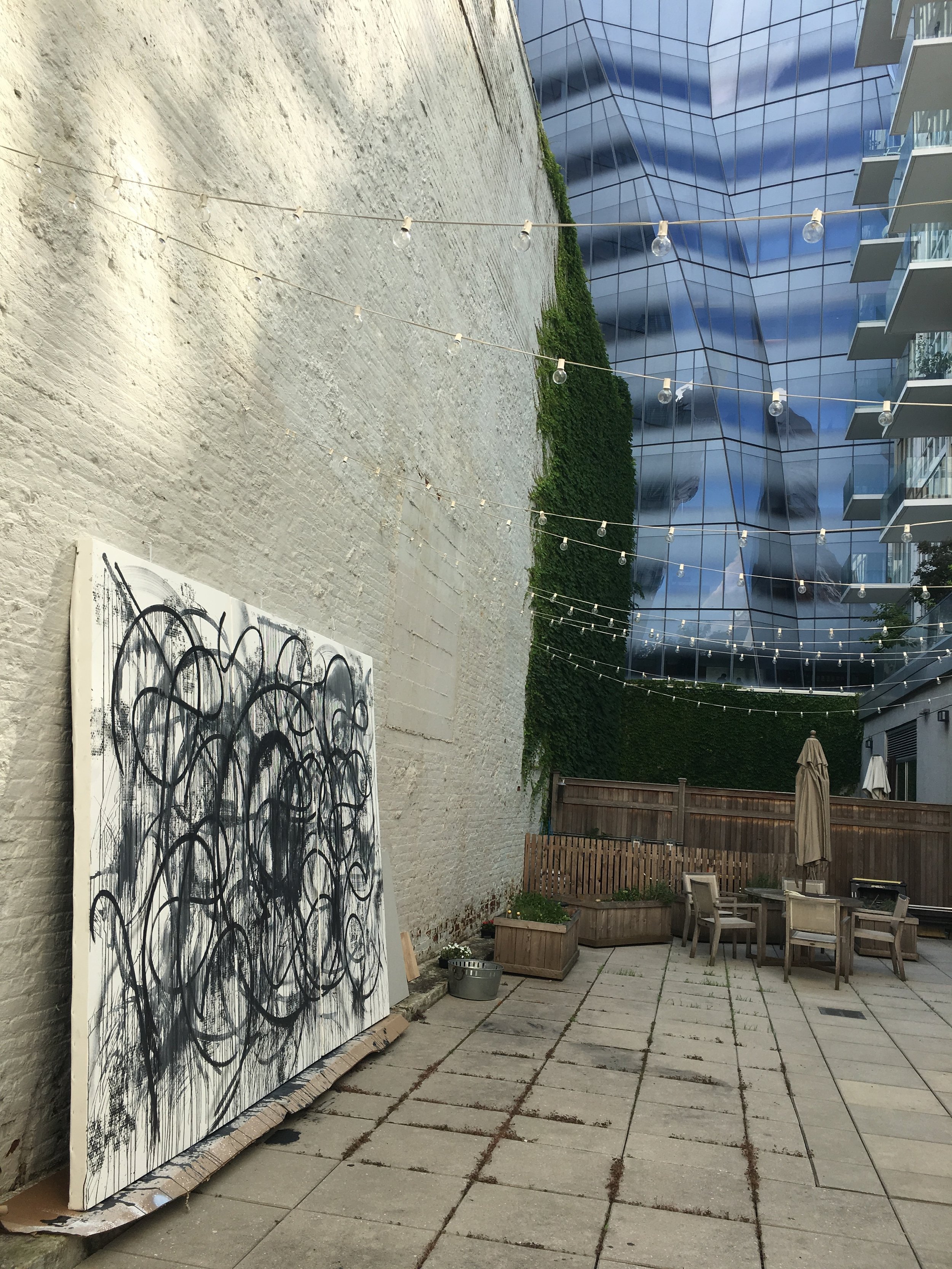Altering Graffiti — A New Form of Signature
Enrico Isamu Oyama's newest work ©Japan Suite
Oyama organic creation on the exhibition opening night ©Japan Suite
Gallery located next to Frank Gehry designed IAC building in Chelsea ©Japan Suite
New York City and graffiti are synonymous, if not so much now, certainly in the latter part of the previous century. So, the back courtyard at Jane Lombard Gallery in NYC’s Chelsea neighborhood was an appropriate setting for Japanese-Italian artist Enrico Isamu Oyama to showcase his talents live. We liked watching him work organically in the outdoor setting framed on three sides by brick walls and on the fourth by the iconic Frank Gehry IAC building.
Oyama was born in Tokyo to an Italian father and Japanese mother. The family took trips every summer to northern Italy, which provided Oyama with two key inspirations. The dichotomy of the fast pace of Tokyo life and the relaxed vibe of rural northern Italy gave him multiple perspectives of the world. The other defining moment for him was his discovery and immersion into “graffiti culture”, which was especially active in Italy at the dawn of the new millennium.
Oyama explains how that inspiration influences his art. “In graffiti culture, a name, composed of stylized letters, represents writer’s alter ego”, he says. “I remove letter shapes, extract only the flowing line and repeat it to maximize its dynamism. By doing so, I create an abstract motif. Instead of having a new name for myself, I gave a name to the motif: Quick Turn Structure (QTS).
“QTS has its own life. Its physical manifestations are channelled into unique art pieces from one specific moment in time. The pieces are called FFIGURATI, a term referring to the word “graffiti” and the Italian expression “figùrati” — literally translated as “figure it out yourself”.”
Oyama, who now calls New York City home, has collaborated with such iconic Japanese brands as COMME des GARÇONS and Shu Uemura. And speaking of COMME des GARÇONS, the Metropolitan Museum of Art here in NYC has just opened a comprehensive retrospective of Rei Kawakubo’s avant garde designs. We will be checking it out in a few days and will have much to show and say on here very soon.




